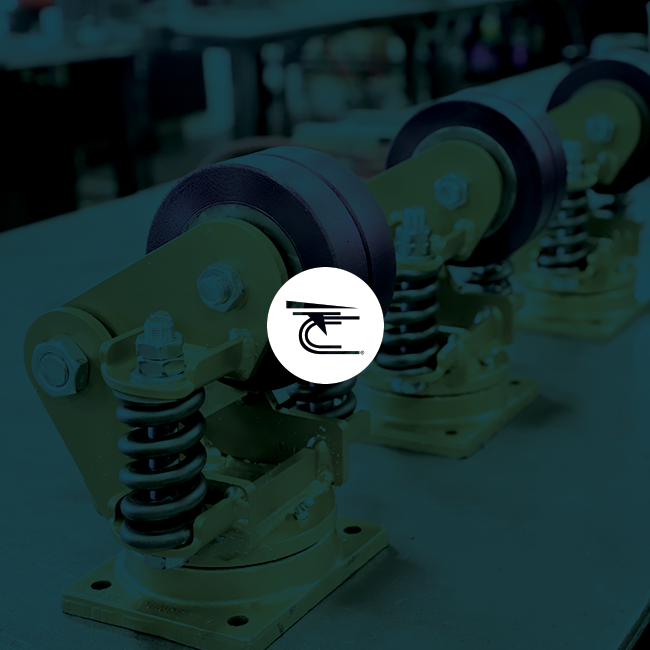

When you’re looking for a quality, long-lasting industrial caster that doesn’t require regular maintenance, there are three critical design choices to keep in mind:
These key factors are:
– A properly-sized swivel section
– Choosing between a hot-forged vs. cold-stamped swivel sections
– The caster’s leg thickness and width.
This post covers those three key design choices and how these choices impact the caster function based on the application.
For the majority of manually pushed carts, the swivel casters do the steering. It’s an important function, and that swivel design isn’t as simple as you might think.
There are several ways for the caster to swivel. The kingpin design consists of a bolt or rivet that holds the caster components together. Depending on the design, the kingpin sometimes can be the weakest link in the system, especially under heavy loads or if the wheels roll over a rough surface. However, the kingpin design allows for adjustment as the swivel section wears, which can extend the caster’s life.
With the kingpinless construction, there are fewer components involved. Instead of a swivel action occurring around a central kingpin, it takes place around a circular raceway, which spreads the load over a wider area. This also allows operation at higher speeds.
Click here for more on the advantages vs. disadvantages of Kingpin/Kingpinless casters.
Different caster manufacturers have introduced ways to make swiveling easier under a variety of conditions. For instance, bearings with precision-ground and sealed raceways, as well as casters with sturdy kingpins forged to the top plate, are designed to work under heavy loads.
Swivel lead is the distance between the center of the wheel and the center of the swivel section. A longer swivel lead increases the swivel rotation distance and makes it turn easier.
Here again, other variables enter the equation, especially load. If you have a swivel lead that’s too long, the caster assembly can break under heavy weight. So more is not necessarily better: for a given load and swivel section, there’s an optimal swivel lead.
Once you’ve determined the appropriate size of the swivel section, you must consider leg size. The thickness of the leg material and leg width determine leg size. It’s important to size both leg thickness and width correctly to support loads safely while at rest and while moving.
The leg impacts the caster application in three significant ways:
The third key consideration also involves the swivel section. Swivel sections are manufactured by cold-stamping or hot-forging. The cost, quality, and strength of your caster vary widely depending on the method used.
Cold-stamping is inexpensive and restricted by the thickness of the metal. For industrial casters, cold-stamping is usually limited to 0.25-inch steel plates. The more expensive hot-forging uses much thicker plates, in the range of 0.875 inches. Hot-forged steel produces the highest quality, strongest material for manufacturing heavy-duty industrial casters.
| Cold Forging Advantages: | Cost savings due to little or no finishing work | Very precise | Economical | ||
| Hot Forging Advantages: | Good ductility and malleability: easier to manufacture customized parts | Excellent surface quality |
Understanding these three critical points in your application can help ensure success, as an improperly sized and constructed swivel section with improperly sized legs means eventual caster failure.
Our expert engineers at Caster Concepts are adept in designing the appropriate caster for your needs. If you want to ensure you’re making the best decisions for your specific application, give one of our highly experienced engineering teams a call. Let’s get moving!